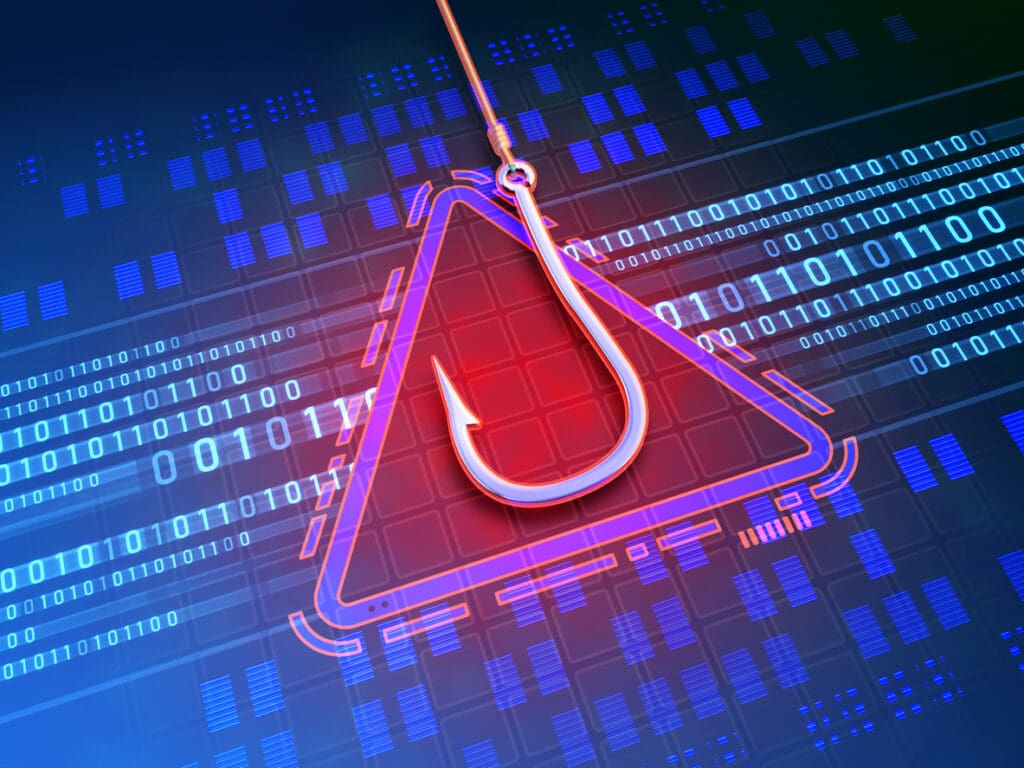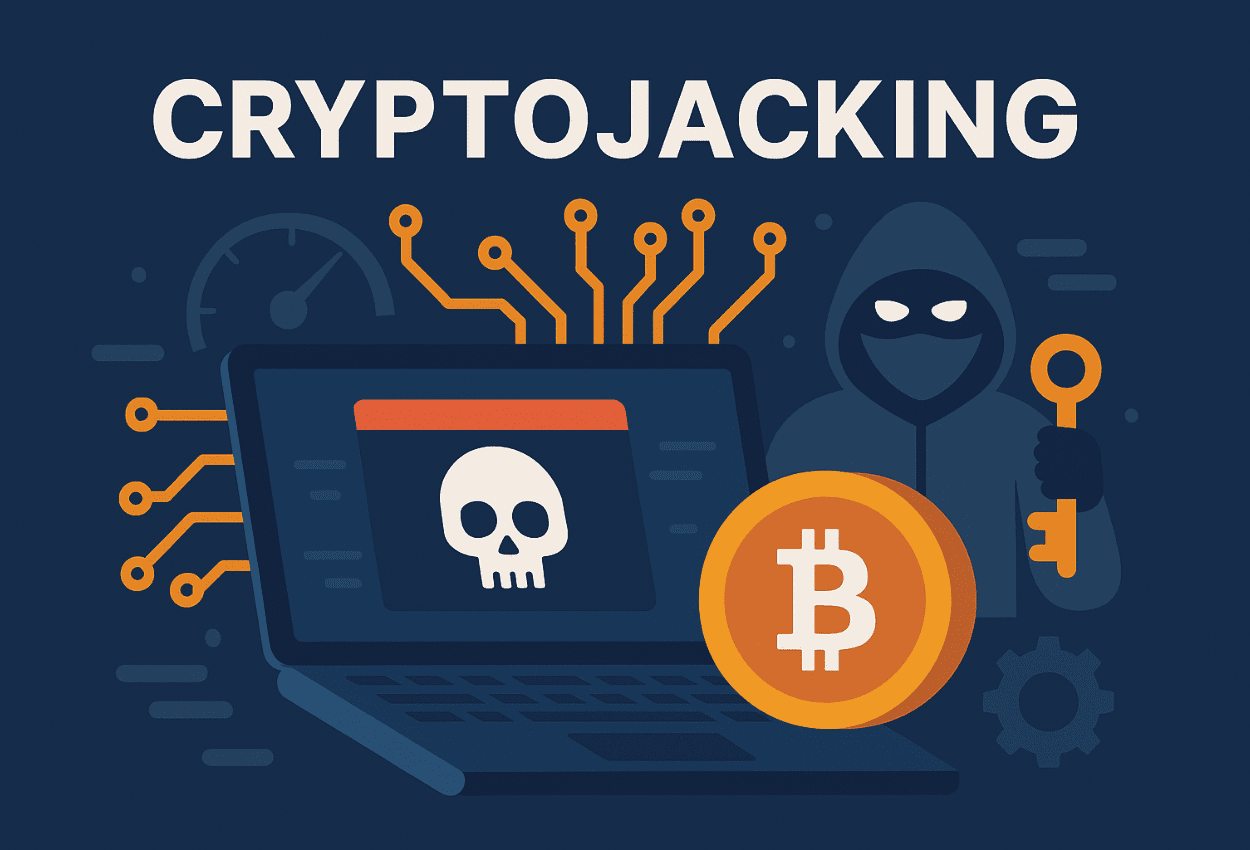Cybercriminals are constantly casting their nets, hoping to reel in unsuspecting victims through phishing scams. These fraudulent attempts to steal personal information often come disguised as legitimate emails, messages, or websites, fooling even the most tech-savvy individuals. At Kirkham IronTech, we believe in making cybersecurity both accessible and easy to understand. So, let’s dive into some lighthearted yet essential tips on how to avoid getting ‘hooked’ by cybercriminals.

What is Phishing?
Phishing is a cyber-attack method where scammers pose as trustworthy entities to trick people into sharing sensitive information, like passwords or credit card details. Whether it’s an email from what appears to be your bank or a text claiming you’ve won a prize, phishers use these tactics to exploit your trust.
With a keen eye, however, you can easily spot these fraudulent attempts. Here are a few common tactics that phishers use and how to avoid getting caught in their trap.
Common Phishing Techniques
- The Urgent Request: “Your account has been compromised! Act now!” Phishers often play on fear and urgency. By creating a sense of panic, they hope you’ll act quickly without thinking. If you receive a message like this, don’t panic. First, check the email address or phone number carefully. Is it really from the institution it claims to be? Most reputable organizations won’t ask for sensitive information via email.
- Too Good to Be True: “Congratulations! You’ve won a $1,000 gift card!” Phishing attempts often use enticing offers that seem too good to pass up. But as the old saying goes, if it seems too good to be true, it probably is. Always be skeptical of unsolicited offers, and avoid clicking on suspicious links.
- The Imitation Game: Fake websites that mimic legitimate ones. One of the most dangerous phishing techniques involves creating a website that looks nearly identical to a trusted site. If you land on a page asking for sensitive information, check the URL carefully. Phishers often use slight misspellings or different domain names (like .net instead of .com) to trick users into entering their credentials.
Real-World Examples
To put these tips into context, here are a few real-world phishing scenarios that have caught many off guard:
- The PayPal Impersonator: An email arrives saying your PayPal account has been limited due to “suspicious activity.” It includes a link for you to log in and restore access. Many fall for it, but upon closer inspection, the URL is slightly off, and the email address is not from PayPal’s official domain.
- The Google Docs Scam: A seemingly innocuous email invites you to view a Google Doc. Clicking the link leads you to a fake Google login page designed to steal your credentials. Always verify the sender before engaging with such invitations.
At Kirkham IronTech, we’ve seen it all. Our approach to cybersecurity is built around staying ahead of these threats, which is why we emphasize proactive security measures. Phishers evolve, but so do we.
How to Protect Yourself: The SLAM Method
Now that you know how phishing works, here are the key steps to protect yourself using the SLAM method:
S – Sender: Always check who the email is from. Is the sender someone you recognize? Phishers often disguise their emails to look legitimate, but subtle differences in the sender’s address can be a red flag.
L – Links: Hover over any links in the email without clicking. Does the URL match the website it’s claiming to be from? If the link looks suspicious or unfamiliar, don’t click.
A – Attachments: Be wary of unexpected attachments, especially if you weren’t expecting anything from the sender. These could contain malware. Only open attachments from trusted sources.
M – Message: Look closely at the content of the message. Is it trying to create urgency or fear? Phishers often use this tactic to get you to act quickly without thinking.
By following the SLAM method, you can significantly reduce your risk of falling for phishing attacks. At Kirkham IronTech, we integrate advanced anti-phishing solutions to help protect your business from these types of threats.
Kirkham IronTech: Your Shield Against Cyber Threats
Phishing isn’t going away anytime soon, but with the right tools and knowledge, you can significantly reduce your risk of being targeted. At Kirkham IronTech, we take a multi-layered approach to security—what we call Defense in Depth, where each layer of your infrastructure is fortified to withstand evolving threats.
What sets us apart is our focus on security first. Many companies treat IT infrastructure management as primary and security as secondary. But we believe in building your IT systems with security as the foundation, ensuring that all aspects of your operations are safeguarded. Whether it’s implementing NIST Cybersecurity Framework 2.0 to identify, protect, detect, respond, and recover, or conducting a thorough Gap Analysis of your current security measures, we’ve got you covered.
Hooking You Up with Proactive Protection
At Kirkham IronTech, we’re more than just a service provider—we’re your partner in navigating the complex world of cybersecurity. Don’t wait until after a breach to realize your vulnerabilities. Right now, we’re offering a free cybersecurity and IT infrastructure assessment to evaluate your current defenses and highlight any gaps that could leave you vulnerable to cyberattacks.
We’ll perform a thorough assessment using our IronTech Framework, which includes security, IT infrastructure, and governance. With this proactive approach, we ensure that your systems are not only secure today but ready to handle the threats of tomorrow.
Don’t get caught by phishers—get Kirkham IronTech on your side and sleep better at night knowing your business is protected.

 Tom Kirkham brings more than three decades of software design, network administration, and cybersecurity knowledge to organizations around the country. During his career, Tom has received multiple software design awards and founded other acclaimed technology businesses.
Tom Kirkham brings more than three decades of software design, network administration, and cybersecurity knowledge to organizations around the country. During his career, Tom has received multiple software design awards and founded other acclaimed technology businesses.
